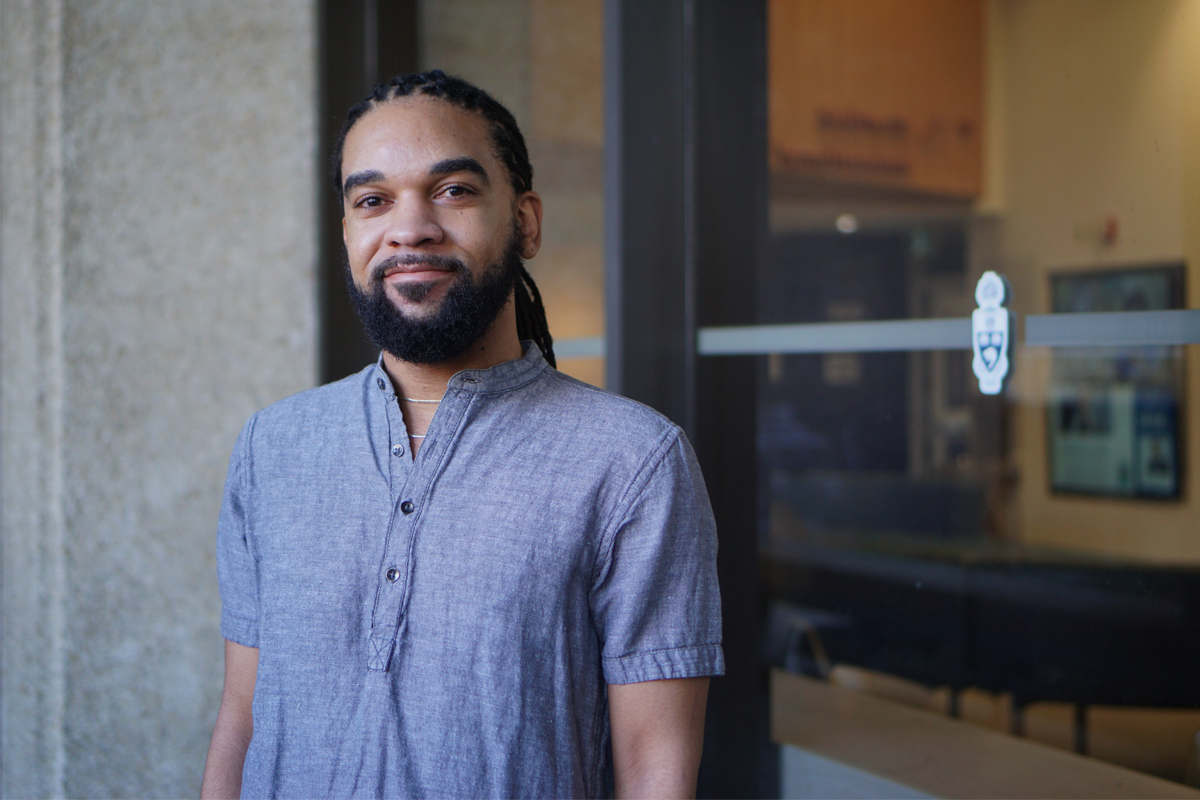OISE doctoral student centers youth and land in climate education

By: Marianne Lau
John Pierre Craig’s research on land education and climate justice will offer an often-underrepresented perspective at the American Educational Research Association (AERA), an annual meeting that brings together scholars from around the world to share the latest research in education.
In Denver, Craig will present a paper based on a land education program they co-facilitated through the Tkaronto CIRCLE Lab, founded by Professor Eve Tuck. In the program, graduate researchers worked with Black and Indigenous youth to explore how they understood climate justice and their envisioned climate futures.
A key research method they used was the “Problem Tree,” a qualitative method of collaborative conceptual mapping. Using sticky notes and large sheets of paper, graduate and youth researchers mapped the issue of climate change not being prioritized in society by identifying its everyday manifestations (the leaves), social attitudes (the trunk), and deeper structures (the roots) that sustain it.
Through this exercise, “anthropocentrism” — the belief that humans are the central focus of existence — emerged as a root cause of climate injustice, empowering youth researchers with a new concept to understand climate justice.
Craig's interest in how Black and Indigenous youth make meaning of climate change began during their undergraduate years when they participated in campus-based climate programs. These opportunities were largely STEM-focused, and Craig was often one of the few Black or brown students present. This lack of representation, which didn’t reflect the care and concern witnessed in their own communities, prompted Craig to explore how environmental policymaking and climate discourse have historically excluded racialized communities.
“Those experiences eventually led me toward participatory research with young people and land education as possible ways to address some of these disconnects,” says Craig, a PhD candidate in the department of social justice education.
Craig is particularly excited about the opportunity to share the Problem Tree method with a broader audience at the AERA, noting its potential to transform how educators and researchers engage with youth on climate issues. “It’s a well-structured, accessible, and generative method for developing shared understandings and proceeding into more focused analyses and action plans,” Craig says.
Craig hopes this research will contribute to conversations that shift how educators think about young people and land. “Both are often treated as passive or in need of stewardship, rather than recognized as active participants in shaping knowledge and possibility.”
"I hope that in encountering this work, educators reflect on how beginning with young people, especially through their relationships with the Land on which they live, can alter how we understand and design education for climate change and climate justice."
- John Pierre Craig will present their paper, “Humans at the Centre: Black and Indigenous Youth Theorizing Anthropocentric Land Relations,” at the Confronting Colonial Legacies: Healing and Justice in Education Paper Session on Apr. 26, from 1:30 to 3 p.m., at The Colorado Convention Center, Meeting Room Level, Room 708.
This article was originally published by OISE.

